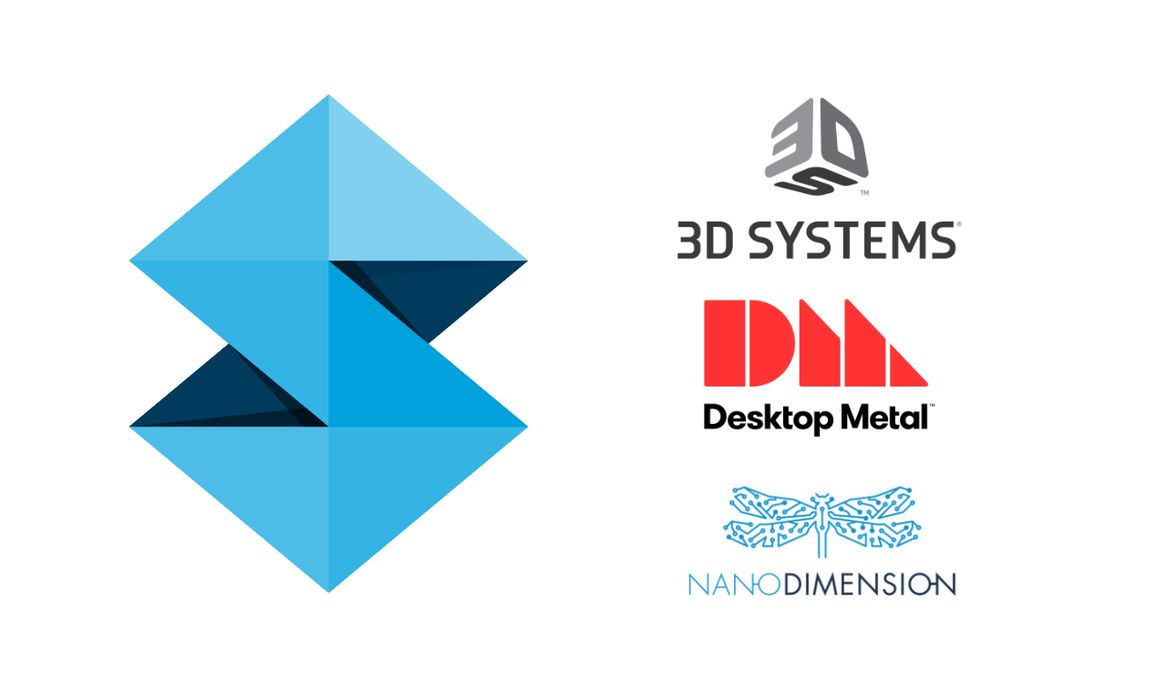
It’s increasingly looking like Stratasys could accept 3D Systems’ takeover offer. What could this mean if they accept?
The two largest publicly traded players in the 3D print industry have been dancing around the idea of merging together in recent weeks. Stratasys, bombarded with takeover proposals from Nano Dimension, and later 3D Systems, has sternly rejected all of them.
Until last week.
At that time they didn’t accept 3D Systems’ proposal, but instead left the doors open for further discussions. Those discussions are certainly underway as you read this post, and we may find out their decision soon.
The 3D Systems proposal involves providing a combination cash and shares of 3D Systems to each Stratasys shareholder of record. The resulting company would be 3D Systems, but incorporating all of the Stratasys staff and assets.
Those assets include a wide variety of 3D printing technologies, materials and much, much more.
I’m now wondering what outcomes would occur if this proposed hook-up is actually completed. What changes? Who wins? Who loses? Let’s take a look at some thoughts.
Patents
Both 3D Systems and Stratasys have been acquiring companies for years. Between the two of them, they have very likely acquired more than 100 separate 3D printing or related operations that are now in their control.
With a merger, the patent rights for a huge number of 3D print processes will all be under a single umbrella. Their portfolio will cover virtually all areas, with a solution for almost every industry.
It’s also possible the larger 3D Systems could be more aggressive in defending their patents as it would be a key asset. The larger size would permit more resources directed to legal activities, which could also this to occur.
Sales and Distribution Networks
Both 3D Systems and Stratasys have the largest sales and distribution networks for 3D printers in the world. Combining the two would create easily the largest sales network in the industry, giving the new 3D Systems all kinds of reach to many customers.
It may be that in some regions there could be conflicts with resellers, with “too many” resellers in play. Some might lose their partnership with the merged company. On the other hand, the new 3D Systems might have a different strategy where they try to have as many folks selling their products as possible.
Synergies
“Synergy” is something that always happens during a merger. The idea is that some roles within organizations are duplicated between the parties, and you need only one to go forward. How many administrative departments do you need, for example?
While those working on specific products would likely be unscathed, there are very likely a huge number of redundant positions that would be eliminated as a result of the merger. 3D Systems wrote of US$100M in savings, and a big chunk of that will be salaries for excess staff. Expect layoffs, possibly significant.
Stratasys Management
What happens to the executive management at Stratasys? If 3D Systems “takes over”, then there would be little need for Stratasys executives. However, they are the folks making the decision here, and negotiations are taking place behind the scenes. It could be that the fate of some executives could be under discussion as a way to tip the scales towards agreement.
Research and Development
Both companies have notable research and development activities, and this is likely to increase proportionally with the new company. While the company would have an enormous number of patents under their control, it would be wise to continue developing new patents. A combined entity would have more resources to do this.
Pricing
With such a broad portfolio of equipment and processes, it is possible prices of equipment and materials could rise. After all, the level of competition is decreased. Stratasys’s RPS technology would dno longer competes with 3D Systems’ SLA technology, for example. This can only lead to increased prices, or even the removal of some technology implementations. Not so good for 3D printer buyers.
Desktop Metal
Desktop Metal had arranged a merger with Stratasys prior to the recent 3D Systems offer. This merger has not yet closed, and is looming in the background. Should the 3D Systems proposal be accepted, 3D Systems said they would pay for any penalty specified in the Desktop Metal agreement.
Desktop Metal would be left on the outside, but presumably with a fat payday from the penalty payment. With that cash Desktop Metal could then pursue acquiring yet another company.
Another possibility is that the new 3D Systems might re-engage with Desktop Metal and initiate another merger on different terms. That would create an even vaster company that could utterly dominate the space.
Nano Dimension
Nano Dimension’s repeated bids have all been summarily rejected by Stratasys and if the 3D Systems agreement is accepted, then Nano Dimension’s pursuit of Stratasys ends forever.
However, Nano Dimension would still have their US$1B pile of cash and certainly would have a mind to use it. Might they pursue acquiring Desktop Metal?
Any Other 3D Print Company
Finally, we have everyone else. There are two implications here.
First, these companies would all now face a truly gigantic competitor with vast resources that cannot be matched. Business could become much more difficult.
Secondly, the larger 3D Systems would have more capability to acquire companies. It would not be far fetched to see 3D Systems acquire a few select other companies for acquisition to fully round out their portfolio.
